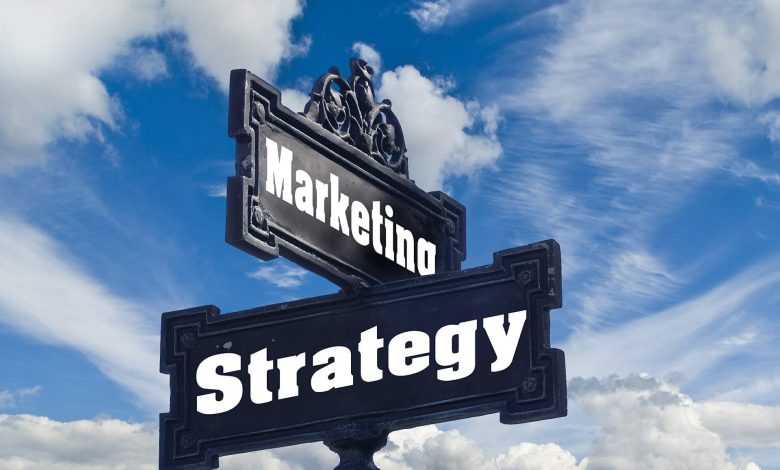Types of Strategy in Product Pricing

To choose the right pricing strategy for businesses, research must be done, positioning strategies must be planned, MVP and beta released, surveys conducted with potential customers about current prices, and business revenue must be maximized without compromising the demand for the offer.
Pricing Strategy Types
There are different types of pricing strategies that can be used to sell products in a competitive market and make a profit, and some of these pricing strategy types are as follows.
Privileged pricing
Premium pricing, also called image pricing or prestige pricing, is a pricing strategy that puts the price of the product higher than that of industry standards and competitors’ products. This idea encourages the perception among buyers that the product has greater utility or higher value compared to competing products because it is sold at a premium price.
Premium pricing strategy has the advantages of generating higher revenue and building a premium brand image. However, in order to make this pricing strategy successful and create a business’s perception of value, it takes a lot of work on the product’s brand quality. Spending a significant amount to build a premium or luxury brand helps businesses create a barrier for competitors to position their products in the same class.
For example, branded unleaded gasoline sells for a higher price than regular unleaded gasoline. The consumer never tests whether the brand is better, but buys considering whether the branded offer is expensive.
Market entry pricing
Penetration pricing is a pricing strategy in which the price of the product is initially kept lower than that of competitors’ products in order to gain most of the market share and trigger word-of-mouth marketing.
Although this strategy may lead to losses at the beginning, it can make many customers turn to the brand because of the low prices. Once these customers are loyal and the brand has achieved strong market penetration, marketers raise prices to a point where they can achieve optimum profit without much loss.
For example, a phone company has launched a phone with all the features of an iPhone at a very affordable price. After this company gained a good market share, it started to launch its products at a premium and made a good profit by raising the prices of the final phones.
Economy pricing
Economy pricing is a hassle-free pricing strategy by general food suppliers or discount retailers, in which they keep product prices at their lowest by reducing marketing and promotional expenditure. This strategy is mainly used to attract the majority of price-conscious consumers.
The key to success using the economy pricing strategy is to sell large volumes of products and services for low.
Price shift
Price review is a strategy of setting a relatively high introductory price when the product is new and unique, with fewer competitors in the market. The idea is to maximize profits for early adopters and make the product more price sensitive before competitors enter the market.
The strategy earned its name by the succession of customer segments shifting as prices fell over time.
The initial high price not only helps the business recover its development costs, but also gives the impression that the product is exclusive and premium. For example, smartphones or tablets are initially launched at a higher price, but the prices of these products begin to decrease over time.
Psychological pricing
Psychological pricing refers to the psychological pricing strategies marketers use to get customers to buy products triggered by emotions rather than logic. These strategies are generally as follows:
Attract Pricing: Attract Pricing involves reducing the price by a minimum amount, which makes the customer perceive the price as lower. For example, since a $6 item is priced at $5.99 in supermarkets, customers’ brains keep $5.99 closer to $5, not $6.
Prestige pricing: Prestige pricing includes rounding up for premium and specialty items, as well as setting a higher price, as rounded figures are easily handled and are preferred in such cases.
One product free pricing when you buy one: This means that if you buy one product, the second product is free or the second product is discounted. It triggers greed among customers as two items are bought for the price of one. This strategy is often used to clear stock or increase sales volume.
Double price tag: Price confidence is the higher or lower initial price sent to the customer so that the mind can revolve around the given price and the retailer buys the product they want. For example, printing a double price tag showing a regular price and a selling price, keeping a lower-priced, medium-quality product with a lower-priced, medium-quality product to increase sales.
Package pricing
Bundle pricing involves selling the bundle, set of goods or services at lower prices than would actually be seen if sold separately. This is an effective strategy for clearing shelf space, increasing profits and packaging unsold products or less demanded products. Packaging can increase product demands when packaged together with two complementary products. Package pricing in the menu options of companies such as McDonald’s is a good example of this pricing.
Freemium
Freemium is an internet-based pricing strategy where basic services are provided for free, but a fee is charged for additional premium features. The freemium strategy differs from the free sample strategy and premium in that it pays nothing to use the free services provided under the freemium business model.
For example, in a phone application, there are applications where parts of the application are provided free of charge but are priced to get more out of the application.
Base and ceiling price determination
Setting a floor and ceiling price for a product is a pricing strategy that allows buyers to pay whatever amounts they want. Unlike its appearance, this pricing strategy often leads to more profits and increased market share, as most customers pay more than the cost price of the product. Although many businesses set a minimum price and use a partial version of this pricing strategy, many refrain from setting a floor price. For example, a famous restaurant has become a successful and profitable business using a pricing strategy that the customer is willing to pay for.
Pricing below cost
Below product cost pricing is a pricing strategy to lower prices to a point where even the offerings are not profitable, in order to eliminate competition and gain the most market share.
An ongoing price war between competitors can lead to adopting a pricing strategy to ensure the business comes out of this war strong.
This form of pricing is illegal in many countries under antitrust and competition laws because it hinders healthy competition. For example, Amzaon company offered books for sale at less than cost price in 2013 and even sent the books for free to win over their competitors.
Dynamic pricing
Dynamic pricing, also called demand pricing, is a relatively new pricing strategy that charges different users for different prices of the same item based on their perceived payment capabilities. This pricing strategy is internet-dependent and is often used by eCommerce websites. It uses cookies and internet browsing history to understand users’ needs and the urgency of purchasing and pricing products to increase sales. For example Amazon, Flipkart etc. E-commerce websites use this strategy to remarket their products to window customers.




